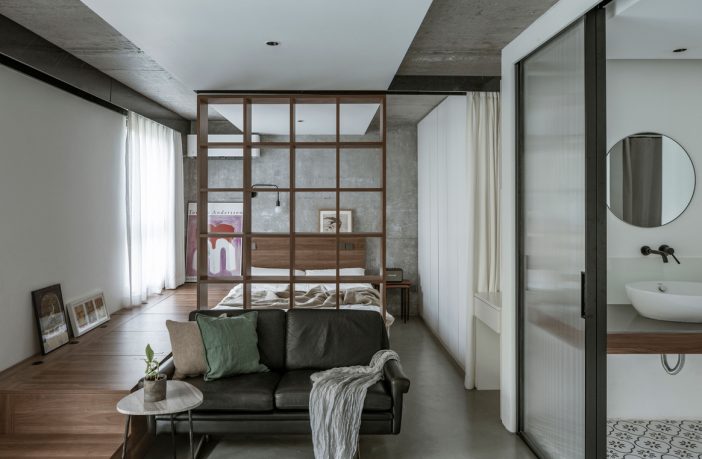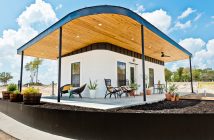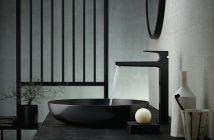According to the United Nation’s “The World’s Cities in 2018”, it is estimated that, “by 2030, urban areas are projected to house 60 percent of people globally and one in every three people will live in cities with at least half a million inhabitants.” Also, between 2018 and 2030, it is estimated that the number of cities with 500,000 inhabitants or more is expected to grow by 23 percent in Asia. China, as the largest economy in Asia, with a GDP (PPP) of $25.27 trillion, is expanding rapidly, both economically and demographically.
With more and more migrant workers coming into the bigger cities in China, it has become increasingly difficult for workers to find an affordable place to live. Some people decide to move away from urban centers and bear with the lengthy commute time, while others are seeking creative design solutions to transform their home into a tiny, functional space to meet their daily needs
In Beijing, interior designer Luo Xiuda was asked to renovate a residential space of 43m² to create a micro living unit. Before the renovation, the house was a conventional one bedroom with one living room. With 43 square meters, this house was divided into a separate bedroom, living room, kitchen and bathroom by three partition walls. The old bathroom was dark and narrow with poor sanitation, and the wet shower area extended across the bathroom.

As the first step of the renovation, the designer decided to remove all existing partition walls and proposed a concept of a boxed bathroom. A transparent partition book-shelf is then installed, and an integrated functional platform is set, forming a new spatial layout.
After removing all existing furniture, the chance to reorganize the current space and add new space dividers emerged. The designer used a curtain beside the dressing table as a separation to ensure the privacy of the sleeping space at night. The bathroom as a whole was installed into the space in the form of a box. The transitional space between the bedroom and kitchen, a L-shaped counter, provides dining and office use. Placed right behind the floor-to-ceiling windows, the counter also utilizes the sunshine to enhance spatial qualities.

Qisi Design was commissioned to renovate a tiny house with a yard. The house is located on the ground floor of a historic conservation building on Huaihai Road in Shanghai. After years of property division, the house is now only 25 square meters. Through the renovation, the new owner hoped to transform it into a short-term rental unit. The designer saw the main design challenge was to “create a warm, comfortable place that can accommodate a variety of activities in a 25 square meter space”. To fully utilize the spatial potential of a small house, the designer decided to start from establishing the connections between the indoor and the outdoor, and adding a mezzanine space to accommodate more people.
The designer combined the courtyard with the interior spaces to obtain more usable area and the possibility of carrying out activities for people to establish an overall connection of space. The designer created an “activity axis” as the main line. Rich activity scenes are made to unfold along this axis.

Before the renovation, the ground was raised 45 cm. Only the toilet area was at the original elevation. In the renovation, the architects kept the floor height of the kitchen area and lowered the floor height of the living room and the bathroom area to the original elevation. The living room was made to form a semi-sinking space through a sense of wrapping.
The mezzanine is the bedroom area. Due to the limitation of floor height, the mattress is directly on the ground. The fixed furniture arranged on both sides of the bed enriches the use of the mezzanine, and also creates an area that does not disturb the below space.
This is a renovation project of an old flat that measures 22 square meters and 3.3 meters in height. Due to the high housing prices in Taipei City, the living space that young people can afford has become smaller and smaller in the last decade. The client and the designer both agreed that the space should be left free with the main furniture arranged discreetly to ensure the comfort of long-term living.
Due to the fact that the client travels abroad frequently for work, at home she desired a hot bath and a good sleep after finishing work. Therefore, a fully equipped bathroom and a compact kitchen became the key program of the design.
To begin, the shower was replaced with a bath, and the washer was moved to the kitchen. The designers also adjusted the layout of the toilet to make room for a water heater, and a sliding door with a mirror which not only makes the maintenance easy, but also amplifies the space visually. Fixed furniture such as the kitchen cabinet, the wardrobe and the shelf are attached to the wall to fully utilize the height and avoid aisles.
The tatami area and cabinet alongside the window make full use of the alcove and also provide ample storage. The light steel handrail on the stairs increases the visual penetration, and the wall below it contains a TV and two concealed cabinets for shoes. There are two wooden tables alongside the wall in the living room that can become a long bar table which can be combined in the other direction to be a dining table. Therefore, the empty space is flexible for different needs, and makes the small flat less cramped.
Author: Scarlett Miao
This article was first published in Arch Daily and is republished with permission.



















